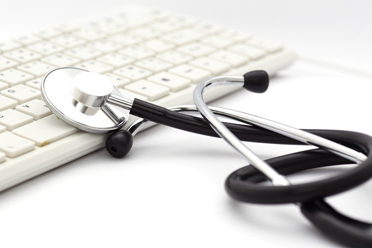 Many providers use shortcuts during EHR documentation to reduce the time taken for documenting a patient encounter. Though shortcut features may make you efficient, there is a greater chance for errors if you use those features inappropriately. Errors entering EHR are difficult to track and may lead to serious issues. Physicians may even end up providing poor quality of care to their patients. If the auditors find errors within EHR documentation, you will lose payments as well. Let’s see whether shortcuts are really advantageous as they seem and the role of a combined approach of EHR and medical transcription.
Many providers use shortcuts during EHR documentation to reduce the time taken for documenting a patient encounter. Though shortcut features may make you efficient, there is a greater chance for errors if you use those features inappropriately. Errors entering EHR are difficult to track and may lead to serious issues. Physicians may even end up providing poor quality of care to their patients. If the auditors find errors within EHR documentation, you will lose payments as well. Let’s see whether shortcuts are really advantageous as they seem and the role of a combined approach of EHR and medical transcription.
Here are some documentation shortcuts and their major shortcomings.
- Copy-Pasting – Known by several names such as cloning or carry forward, this practice involves copying information from a previous note and pasting it on a current note or simply reusing the previous information. Copy-pasting without reviewing and updating the note can lead to serious consequences for patient care and reimbursement owing to the errors that may enter the patient records, and fraudulent claims. Documentation should be specific to each encounter.
- Using Templates – The templates with auto-populated fields save a lot of time as physicians only require to scroll through the templates, and point and click on items to choose positive or negative. However, the templates can also become erroneous if providers do not change a result that may have been positive during a previous visit and negative during the current visit or pull forward any process that was not actually performed. In a busy practice, there is more chance for such kind of incidents to happen.
- Favorite Lists – Certain EHR systems provide favorites list that stores the diagnoses physicians use most with a view to help them record diagnoses faster. But, the physicians must choose a diagnosis from that list only if the history and exam supports it. When it comes to documenting a large amount of patient data, physicians tend to use this shortcut to save time without a true assessment at that particular visit.
In short, shortcuts may make physician documentation efficient, but they also make the documentation error prone. In order to ensure quality care and proper payments, you should either remain more vigilant while using shortcuts or completely avoid using shortcuts. It is always better to avoid using shortcuts in a busy practice with mounting work pressure as there is greater possibility to make mistakes while hurrying to finish the documentation.
Enhancing EHR Documentation via Transcription
By combining EHR and transcription, you can avoid the use of shortcuts and save your time significantly at the same time. If you are adopting this approach for your practice, you can transcribe physicians’ recordings with the help of transcriptionists and review the transcribed data utilizing editors and proofreaders. You can then populate that data into relevant EMR fields. With a reliable medical transcription service in place, physicians need not bear the brunt of using EHR shortcuts anymore. On the other hand, they can benefit from accurate and timely patient data.


